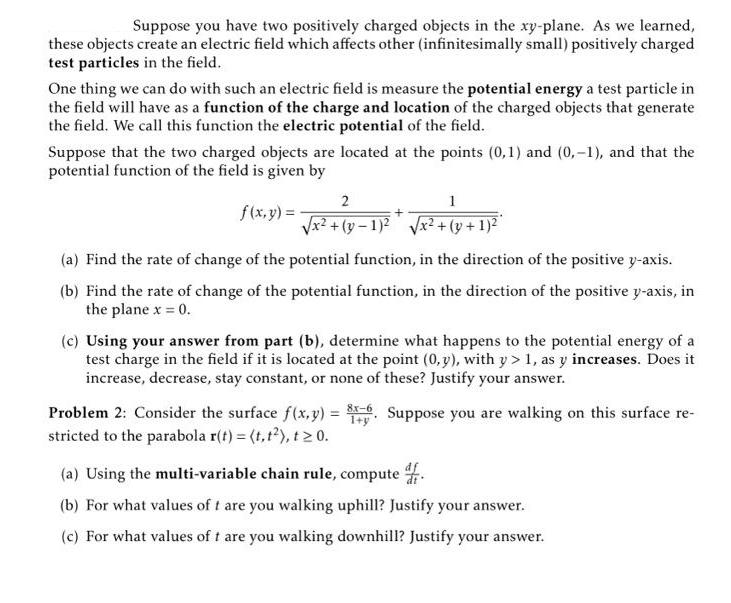Answered step by step
Verified Expert Solution
Question
1 Approved Answer
Suppose you have two positively charged objects in the xy-plane. As we learned, these objects create an electric field which affects other (infinitesimally small)

Suppose you have two positively charged objects in the xy-plane. As we learned, these objects create an electric field which affects other (infinitesimally small) positively charged test particles in the field. One thing we can do with such an electric field is measure the potential energy a test particle in the field will have as a function of the charge and location of the charged objects that generate the field. We call this function the electric potential of the field. Suppose that the two charged objects are located at the points (0,1) and (0,-1), and that the potential function of the field is given by 2 1 f(x,y) = x + (y-1) x + (y + 1) (a) Find the rate of change of the potential function, in the direction of the positive y-axis. (b) Find the rate of change of the potential function, in the direction of the positive y-axis, in the plane x = 0. (c) Using your answer from part (b), determine what happens to the potential energy of a test charge in the field if it is located at the point (0,y), with y> 1, as y increases. Does it increase, decrease, stay constant, or none of these? Justify your answer. Problem 2: Consider the surface f(x,y) = . Suppose you are walking on this surface re- stricted to the parabola r(t) = (t, t), t 0. (a) Using the multi-variable chain rule, compute. (b) For what values of t are you walking uphill? Justify your answer. (c) For what values of t are you walking downhill? Justify your answer.
Step by Step Solution
★★★★★
3.47 Rating (163 Votes )
There are 3 Steps involved in it
Step: 1

Get Instant Access to Expert-Tailored Solutions
See step-by-step solutions with expert insights and AI powered tools for academic success
Step: 2

Step: 3

Ace Your Homework with AI
Get the answers you need in no time with our AI-driven, step-by-step assistance
Get Started


